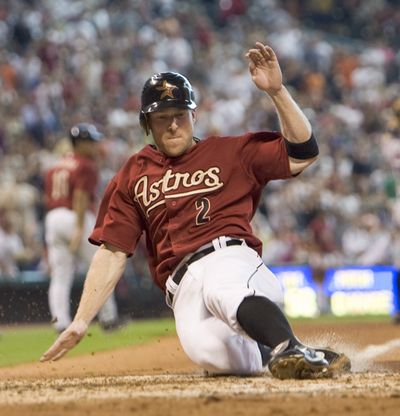Baseball players receive little instruction in sliding

Taking batting practice and infield practice are rituals in baseball.
Sliding practice? Not so much.
Ask a player at the highest levels of the game when he last rehearsed the art of getting down and dirty on the base paths, and he’ll probably tell you he can’t remember. Some might tell you never.
Even if done right, sliding is one of the most common causes of injuries in the game. It’s an assumed risk.
Still, former major leaguer Darin Erstad said sliding is something he probably should address more now that he’s head coach at Nebraska.
“As I was brought up, it wasn’t even talked about,” he said. “I can count on one hand how many times in spring training we broke out the sliding mat and slid. You just got to base as quick as you could.”
The great debate is whether sliding feet-first or headfirst is more efficient.
Ty Cobb was known for going in with cleats up. Base-stealing stars such as Maury Wills, Lou Brock and Davey Lopes were feet-first guys. Pete Rose came along and popularized the headfirst slide. All-time steals leader Rickey Henderson went headfirst, as do many of today’s top stealers.
Baseball people say a player always should go feet-first into home and first base because of the risk for head, shoulder, wrist and hand injuries. But because there are varying circumstances – from the angle the runner is leaning to the position of the defensive player – it’s not uncommon for headfirst slides to occur in any circumstance.
David Peters, an engineering professor who studies baseball physics at Washington University in St. Louis, said his research suggests headfirst sliding gets the runner to the base faster, but barely. That’s because the tips of the runner’s fingers are farther from his center of gravity, giving him a 6- to 8-inch advantage when he stretches out for the bag.
That advantage, of course, is reduced if the runner clenches his hands into fists as he goes into the bag to avoid finger injuries.
Either way, “it’s a millisecond of time, but you give yourself some extra distance,” Peters said.